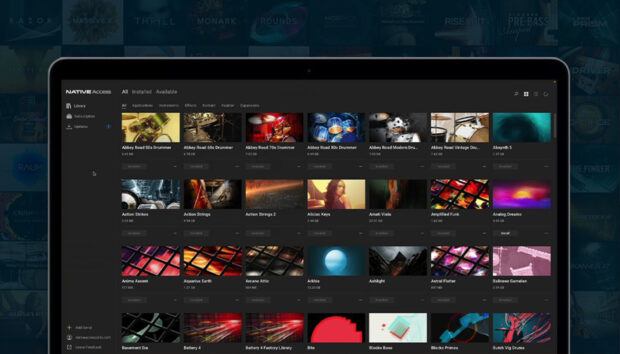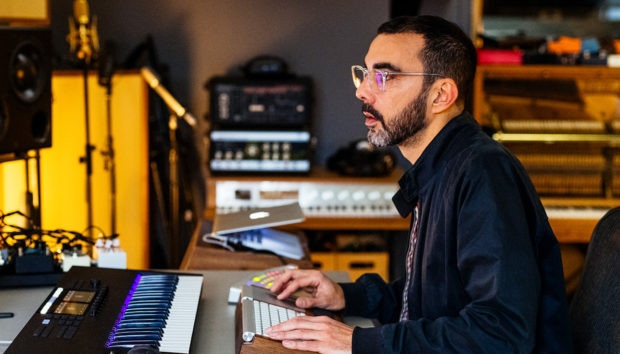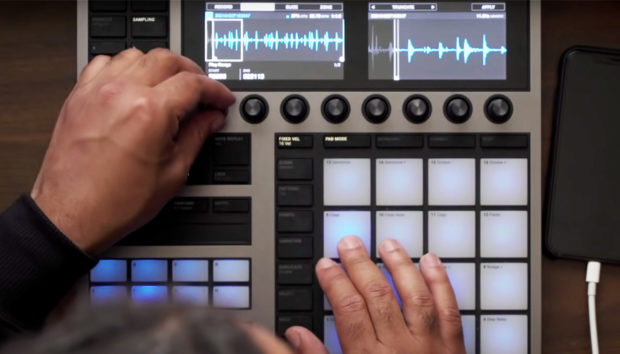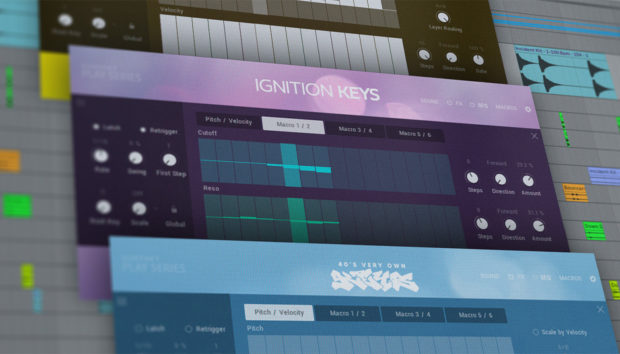
Dive deeper into the sounds of Lisbon’s dance music scene, as Native Instruments shares an exclusive beatmaking video from DJ Marfox.
In a small corner of southern Europe, a group of producers and DJs have created a stir that is shaking the world of underground dance music. Neighborhoods in the Portuguese capital like Quinta Do Mocho and Pendão have become the epicenter of a ferocious new sound, one that combines aggressive beats, seemingly impossible polyrhythmic contortions, and abrasive grooves into a cocktail that has as much in common with African musical traditions as the electronic scene they are dominating.
Each of the scene’s producers lists a long lineage of influential styles for their tracks, including kuduro, semba, batida, kizomba, and tarraxinha. These are all from lusophone Africa that travelled to Lisbon with immigrants and refugee populations fleeing conditions in their home countries. Plenty has been written about the bairros of Lisbon that hosted the arrivals – neighborhoods such as Quinto Do Mocho that were previously all but cut off from the rest of the city, both physically and culturally. The predominantly African communities brought a musical and rhythmic diversity to the areas, that naturally bled into the styles of young producers experimenting with DJ culture and electronic music.
DJ Nervoso, widely credited as the father of the scene, recalls how he would DJ at parties in the neighborhood, mixing in his signature self-produced tracks amongst the more traditional sounds of zouk and rhumba.
“I’d play at parties around here, in the neighborhoods and in the shops,” Nervoso says. “I’d play songs that came from producers who lived in Angola, songs that came from Angola, and so on. What I produce is in a more aggressive style, it’s more danceable, more provocative. It’s a ghetto kind of mix. It has a bit to do with rave, techno, kuduro, all at the same time, mixed up. And the folks, even if they don’t want to or don’t know how to dance, they’ll move a bit.”
These aggressive productions began to win over the younger dancers – one of whom, DJ Marfox, would be become his protégé.
“I didn’t know him, but I went up to him and asked ‘Whose music is this? I want to have that music! Man, everybody’s dancing to this sound’,” recalls Marfox. “And he told me ‘Well, this music is mine.’ Normally, if you go to another neighborhood and see a DJ who says the music’s his own, in your head you’ll think he’s lying. But he says ‘No, it’s mine! Want to see?’ And he loads up FruityLoops at the same time that he’s playing with a program called PCDJ, and he starts producing beats on the fly, while he’s performing…And the world flipped.”

DJ Marfox
DJ Marfox has been spearheading the new sound of Lisbon for the past few years. Born Marlon Silva, Marfox’s role within the city can hardly be overstated – from mentoring young producers, performing all over the world, releasing on Príncipe, Warp, Lit City Trax, and even inspiring a legion of other producers to adopt his “fox” moniker – such as Nedwyt Fox, Cirofox, Dadifox, Adifox etc. The name originally relates to the Star Fox Nintendo game he used to play as a teenager.
His sound shows a strong affinity for bright, digital synth lines that resemble rave or EDM, underpinned by the frenetic polyrhythms of a mutated kuduro. His productions and DJ sets effortlessly range from 100 BPM tarraxinha (such as with “Tarraxo Everyday“), to breakneck bangers like 2685 on Príncipe.
Having begun his career under the tutelage of DJ Nervoso, Marfox started his production career using FruityLoops.
“I downloaded FruityLoops and I’d install it on the school computers,” the DJ says. “I’d create an access on the Windows computers just for me. I’d give it my own password, so no one accessed any of that. Then, in my spare time, during the longer recess periods or during lunch, I’d go to the library with my headphones and further explore what I had learned the day before [with Nervoso]. You have to explore. So, Nervoso showed me how to make a track, right? But my first track took me 25 hours to make. In other words, what took me 25 hours to do, Nervoso would’ve done in an hour!”
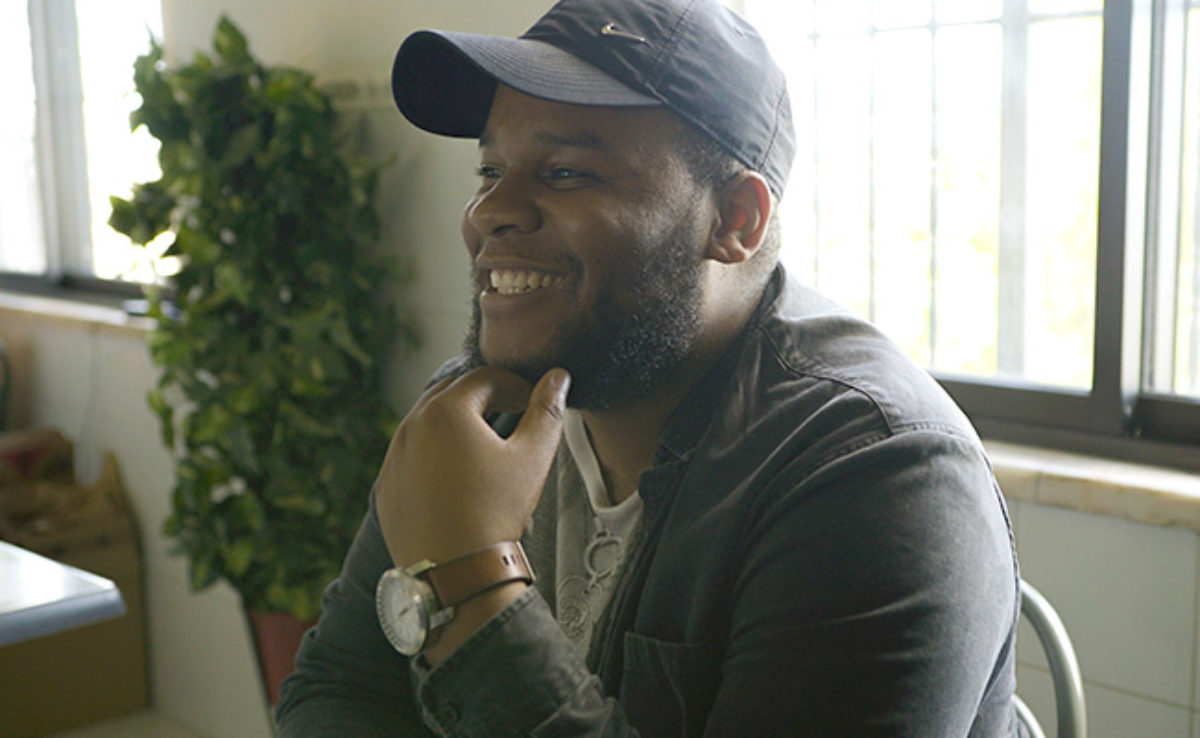
Making beats with MASCHINE JAM
Now working with MASCHINE JAM, Marfox’s focus is on the quality of sounds he has to work with. MASCHINE’s library offers him a wealth of options for building his grooves – searching and using hits and one shots from a myriad of different kits.
Listen to the completed track here:
In this exclusive video you can see how Marfox builds his grooves quickly. Starting with his kicks and then auditioning snares via the browser, he generally prefers to record his drum sounds in directly, keeping the groove very loose and un-quantized. Adding vocal stab samples from his own library, the track begins to find its killer groove. After around 25 minutes of honing the rhythmic components, Marfox begins to incorporate some of the more rave / EDM sounds he is renowned for, trying out ideas via the piano roll. He then begins to arrange the track in JAM, experimenting with different patterns and groupings of sounds.
Hear more: https://principediscos.bandcamp.com/








